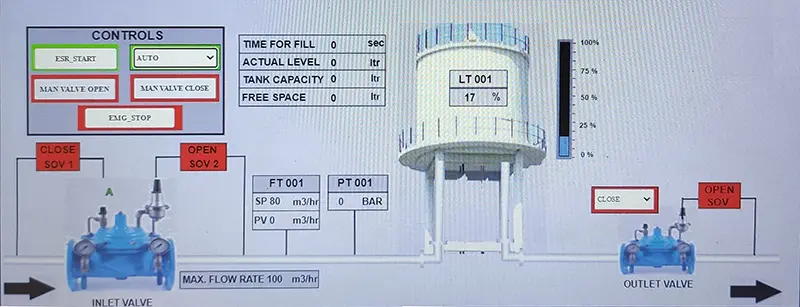It is a general practice to utilize Flow Control Valves so as to reduce and/or control pressure in even the very sophisticated industrial cleaning machines. The risks of using flow control valves to control pressure have been discussed have been discussed for various industrial applications – Which is it? “
Pressure Reducing Valves, Flow Control Valves with a feedback mechanism or back pressure controlling valves are the only means to provide reliable pressure control. This blog will explain the primary operating features of Pressure Reducing Valves.
A valve meant for controlling pressure, it should be output pressure sensitive and adjust an orifice within the valve to maintain the required pressure. Although there are different ways this can be done, the following illustration represents most of them.
Illustration
In a certain type of P.R.V.s, a diaphragm flexes in response to the pressure on the outlet side of the valve. This diaphragm is attached to the moving part of a variable orifice valve. To adjust the output pressure, the movement of the diaphragm is counteracted by springs and an adjustable screw.
These little valves that seems to work backwards from the way we think it should, that is what we have seen. But what goes on inside that, have we actually thought?
Through the inlet port, the liquid or gasunder pressure penetrate in to the valve. It then enters through an adjustable orifice which is meant to have the minimum possible response to push ahead the pressure. (Otherwise the pressure on the inlet side of the valve would tend to hold the valve closed under high inlet pressure conditions.) Once the liquid goes through the orifice, it reaches a chamber. One wall of the chamber is a diaphragm, which is attached directly to the moving part of the adjustable orifice valve. Two springs are there to tamper the diaphragm’s motion and the attached moving part of the valve. In the above illustration, pressure is being transmitted from the adjusting screw to the diaphragm and moving valve component by spring “A” at the top. While, the movement of the diaphragm and the moving valve component is being counteracted by spring “B” at the bottom. As the pressure in the chamber behind the diaphragm increases, the diaphragm goes upwards to reduce the size of the orifice, resulting in restricting flow and reducing the outlet pressure. In the opposite case, due to reduced pressure the diaphragm goes downward enlarging the orifice and thereby increasing flow to increase outlet pressure. Theadjusting screw at the top makes the balance to be adjusted between the springs, thereby balancing the diaphragm as required to produce the desired outlet pressure.
This procedure is in use since last so many years to reduce pressure of liquids and gasses in a reliable way. Even if there is no flow, the pressure on the valve’s outlet side is regulated. In some instances, “Back – Pressure”, another type of valve can also be used to regulate pressure.
For any queries, please feel free to contact us – info@4maticvalves.com


